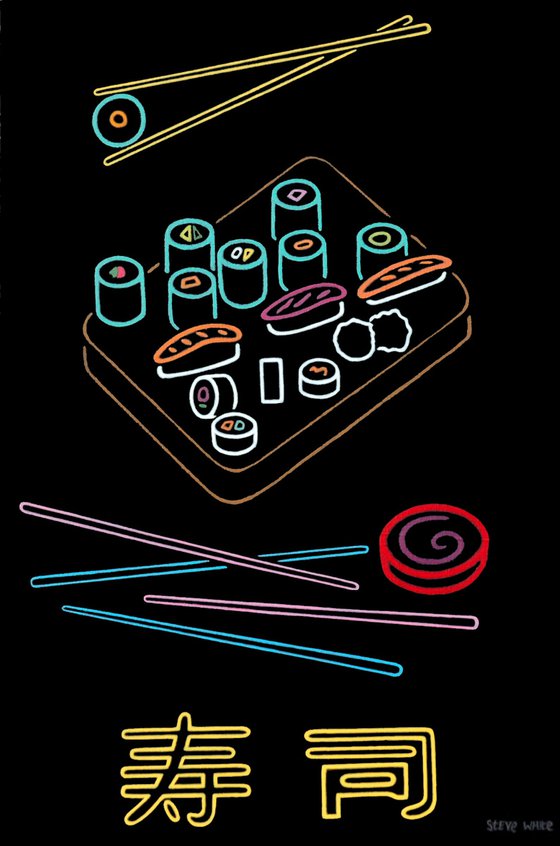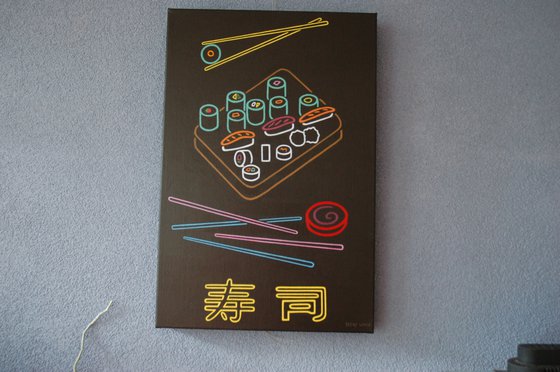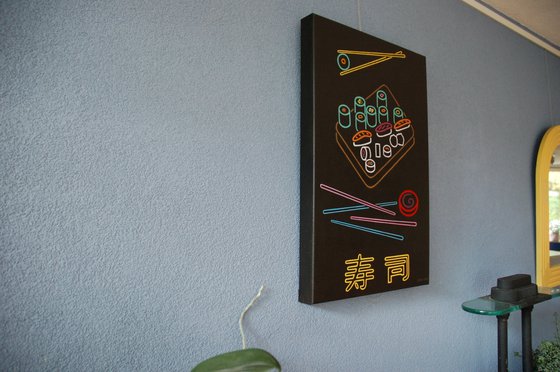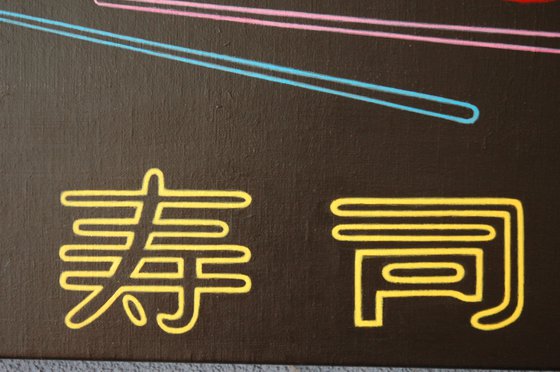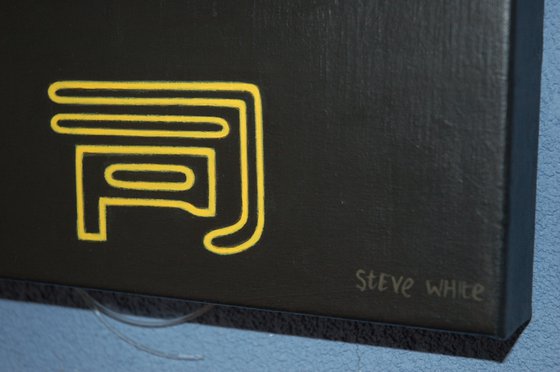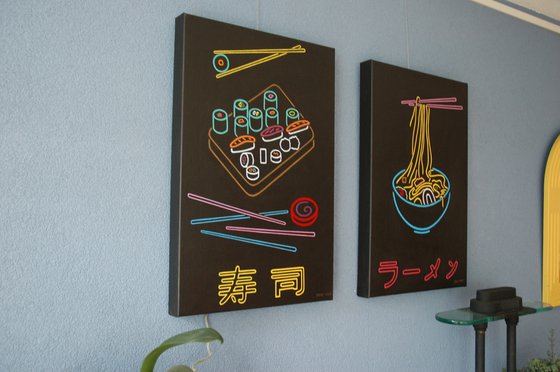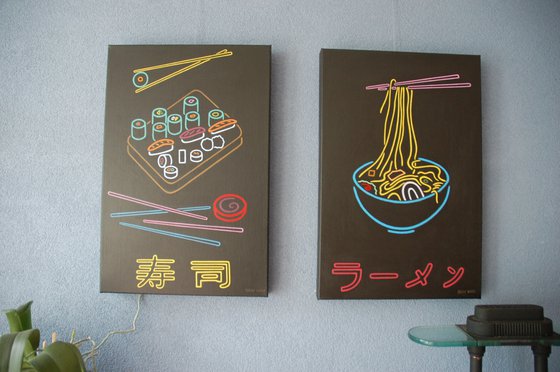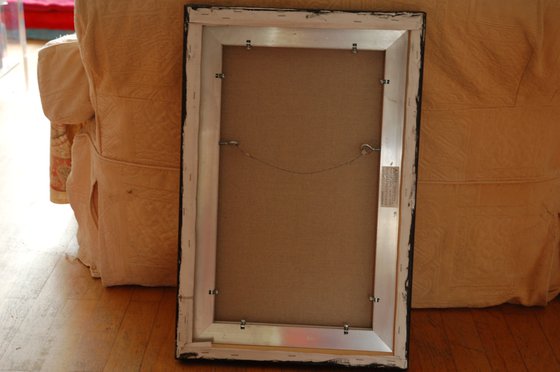- By medium
- By subject
- By budget
- Sales
- Gift cards
- Discover all art
- Artists
- Editors’ picks
- Ideas
Original artwork description:
Think about Japan and you probably think Fuji, sushi, Hiroshima, cherry blossom, punctual trains. And yet Japan is the spiritual home of the neon sign. Japan survives under a tangled web of neon tubing like a mangrove-root, hallucinogenic circus of fizzing and buzzing excess. The first neon sign, for Tokyo Pan Bakery, went up in the Shinjuku area of Tokyo in 1926. Since then neon has spread like a psychedelic rash. In this artist’s opinion good neon signs – not the large flashy billboards screaming ‘Hey You! Buy This! Or Else! - are the modern offspring of another great Japanese artistic tradition: woodblock printing. Good signs, like good woodblock prints, eschew details and have to convey their meaning with the minimum of simple strokes. And Chinese Kanji, which is also used in Japanese calligraph,y has been considered a supreme visual art so much that Picasso himself once declared that if he had been born Chinese he would have been a calligrapher rather than a painter.
This picture has a twin - see Ramen.
Limited Edition Prints.
Printed on William Turner Hahnemuhle fine art exhibition quality paper (310 g/m2) using Epson Ultrachrome Pro Pigments, the colours remain true to the original up to 100 years.
The image size is 45×30 cms and there is an additional 3 cms border all the way round the image (ie total size: 51×36 cms). The artist will sign and number the print in this border. The print is unframed.
Prints will leave the artists studio within 7 days, rolled in a heavy tube, accompanied by a Certificate of Authenticity and sent via track and trace
Materials used:
Acrylics
Tags:
#neon #neon lights #japanese art #japanese print #japanese food #japneseSushi (2021) Acrylic painting
by Steve White
2 Artist Reviews
£405.74
- Acrylic painting on Canvas
- One of a kind artwork
- Size: 40 x 60 x 4.5cm (unframed) / 45 x 60cm (actual image size)
- Ready to hang
- Signed on the front
- Style: Impressionistic
- Subject: Still life
Loading
Original artwork description
Think about Japan and you probably think Fuji, sushi, Hiroshima, cherry blossom, punctual trains. And yet Japan is the spiritual home of the neon sign. Japan survives under a tangled web of neon tubing like a mangrove-root, hallucinogenic circus of fizzing and buzzing excess. The first neon sign, for Tokyo Pan Bakery, went up in the Shinjuku area of Tokyo in 1926. Since then neon has spread like a psychedelic rash. In this artist’s opinion good neon signs – not the large flashy billboards screaming ‘Hey You! Buy This! Or Else! - are the modern offspring of another great Japanese artistic tradition: woodblock printing. Good signs, like good woodblock prints, eschew details and have to convey their meaning with the minimum of simple strokes. And Chinese Kanji, which is also used in Japanese calligraph,y has been considered a supreme visual art so much that Picasso himself once declared that if he had been born Chinese he would have been a calligrapher rather than a painter.
This picture has a twin - see Ramen.
Limited Edition Prints.
Printed on William Turner Hahnemuhle fine art exhibition quality paper (310 g/m2) using Epson Ultrachrome Pro Pigments, the colours remain true to the original up to 100 years.
The image size is 45×30 cms and there is an additional 3 cms border all the way round the image (ie total size: 51×36 cms). The artist will sign and number the print in this border. The print is unframed.
Prints will leave the artists studio within 7 days, rolled in a heavy tube, accompanied by a Certificate of Authenticity and sent via track and trace
Materials used:
Acrylics
Tags:
#neon #neon lights #japanese art #japanese print #japanese food #japnese14 day money back guaranteeLearn more
